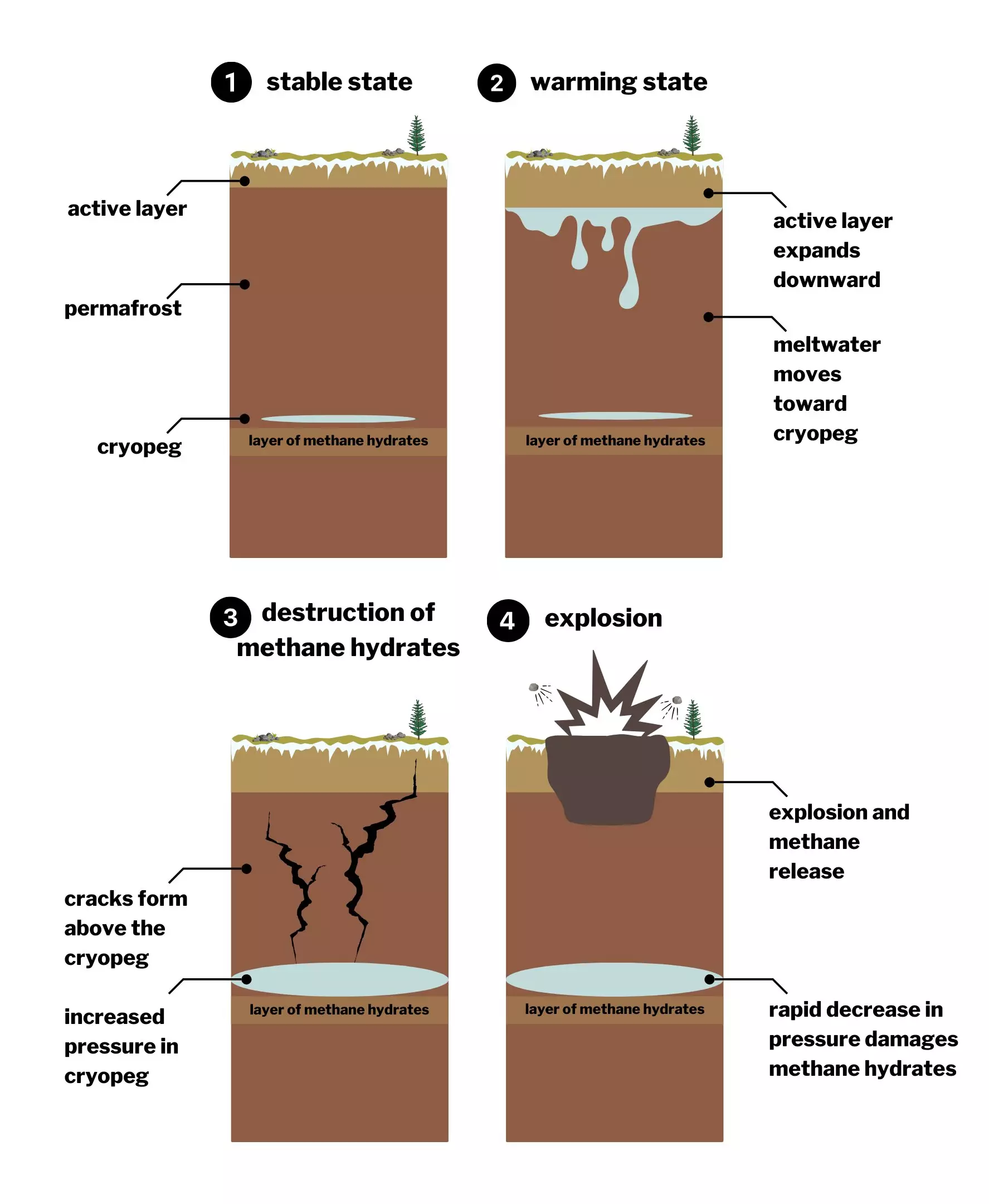In 2014, a series of enigmatic craters began to emerge in the permafrost of the Yamal Peninsula in Siberia, sparking intrigue and concern among scientists and environmentalists alike. These craters, some reaching up to 70 meters in width, seemed to materialize overnight, leaving behind questions that demanded urgent investigation. Recent research has provided insights, suggesting that these geological formations are not merely random occurrences but may result from specific climatic and geological interactions that involve the catastrophic release of methane trapped beneath the frozen ground. This article delves into the science behind these craters, the mechanics at play, and the implications for our understanding of climate change.
Recent studies, particularly those published in the journal Geophysical Research Letters, indicate that the formation of these craters is primarily driven by climate change-related shifts in pressure within the permafrost. The phenomenon revolves around the interaction between surface warming and underground geology, particularly the destabilization of methane hydrates, a form of methane that solidifies under conditions of high pressure and low temperature. Ana Morgado, a chemical engineer involved in the research, emphasizes the uniqueness of the geological conditions on the Yamal Peninsula, highlighting that only under precise circumstances can such explosive methane releases occur.
The Yamal Peninsula is characterized by its low-lying terrain and thick layers of permafrost. The traditional understanding of permafrost melt suggests that as temperatures rise, more regions of this frozen ground become susceptible to thawing. However, this study posits that simple melting isn’t adequate to explain the explosions observed. Instead, it emphasizes a complex interplay of geological factors and osmotic processes that act as safety valves within the frozen landscape.
The researchers theorize that significant pressure changes occur due to a series of biochemical reactions triggered by climatic factors. As the active layer of the permafrost thaws, salty water known as cryopag migrates and collects in pockets beneath the surface. This influx of water occurs through the osmosis process. As these layers fill beyond their capacity, pressure builds up over time, leading to structural failures in the permafrost layer above.
Julyan Cartwright, a geophysicist involved in the research, explains that this explosion phenomenon can be likened to a tire bursting due to excessive air pressure. In the case of the Yamal craters, the geological conditions create an ‘osmotic pump’ that drives fluid accumulation, which ultimately leads to fractures in the ground. These fractures create pathways for the rapid release of methane gas accumulated in the substratum, culminating in explosive events that manifest as craters on the surface.
Such a scenario illustrates how environmental stressors stimulated by climate change can culminate in dramatic geological outcomes. The timeline of increasing climate temperatures dating back to the 1980s aligns closely with the emergence of these sudden geological events, presenting a clear cause-and-effect relationship.
The revelations regarding the origins of these craters carry profound implications for climate science and our understanding of methane as a greenhouse gas. Given that methane is significantly more potent than carbon dioxide in terms of its heat-trapping ability, the explosive release of such a large volume poses considerable risks for global climate stability.
Moreover, the research underscores a potential feedback loop wherein the warming climate catalyzes further release of greenhouse gases, thereby exacerbating climate change. Morgado cautions that while this phenomenon may seem isolated to the Yamal Peninsula, its implications highlight how similar geological interactions elsewhere could exacerbate global warming.
The study of Siberian craters serves as a not-so-subtle reminder of the consequences of climate change on Earth’s geology. As researchers continue to unravel the complexities of these enigmatic formations, it becomes increasingly clear that we must consider not only the visible effects of climate change but also the hidden geological dynamics at play. Understanding the mechanisms behind such explosive phenomena is critical for predicting future environmental changes and developing strategies to mitigate the impacts of global warming.
In essence, the Yamal Peninsula stands as a geological laboratory, offering critical insights into the interplay between climate change and geological processes. As we move forward, maintaining vigilance and commitment to studying these phenomena will be imperative to safeguard our planet’s future.


Leave a Reply